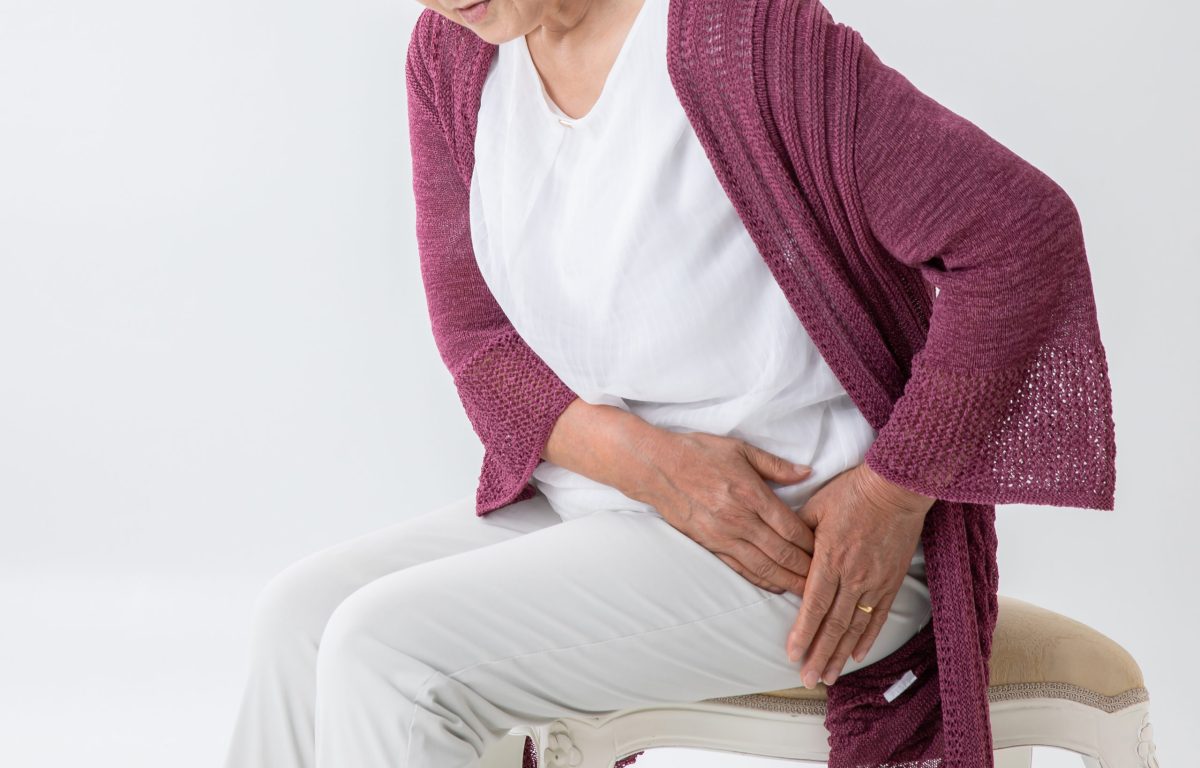Osteoarthritis is the most common type of arthritis to affect the hip joint. It occurs overtime by wear-and-tear and is most frequently seen in patients over 60 years of age.
Once the arthritic process begins, progression is inevitable. It can end in the loss of cartilage in the hip joint, which results in bone-on-bone rubbing. The pain and degree of disability experienced by those with arthritis varies.
Symptoms of Hip Arthritis
In people who have hip arthritis, walking and other motions that stress the hip cartilage increases pain symptoms. This limits a person’s ability to be active – which in turn can weaken the muscles that control the hip joint. This cycle of pain, lack of movement, and weak muscles makes it difficult to perform daily activities.
Because of the loss of gliding surfaces of the bone, it may feel like the hip is stiff. It can feel like snapping, clicking, or catching within the hip. The pain goes into the groin, the side of the hip, buttock, and can even spread down to the knee.
Walking long distances, standing for long periods, and climbing stairs puts stress on the hip that generally makes arthritis pain worse.
Treatment for Hip Arthritis
The goal of treating osteoarthritis in the hip is to improve a person’s mobility and quality of life. Part of treatment involves increasing the function of the hip and controlling the pain.
Treatment plans vary depending on the severity of the arthritis but can include:
Basic:
- Physical Therapy It focuses on restoring joint function which promotes healing and recovery. Is one of the best ways to help restore function. Usually the pain will limit the progression of the physical therapy.
- Non-Steroidal Anti-inflammatory Drugs (NSAIDs) The most commonly used NSAIDs are aspirin, ibuprofen (Advil, Motrin), Toradol, Naproxen. Celebrex, Voltaren and indomethacin. Although they help reduce pain, they come with lots of side effects from upset stomach to stomach bleeding.
- Steroid Injection It causes pain and flare ups at first but then helps reduce inflammation and possibly pain. Unfortunately, repeated use has been shown to destroy cartilage, making the symptoms worse down the road.
Surgical:
- Joint Scope (Arthroscopy) A scope is placed into the joint under sedation. The surgeon will clean and flush the joint. It is greatly recommended, as more cleaning (shaving) the cartilage cases more osteoarthritis.
Advanced Non-surgical:
- Platelet Rich Plasma Platelet Rich Plasma (PRP) is concentrated platelets and plasma that is taken from a patient’s own blood. The PRP has growth factors that promote tissue repair and accelerate healing. Usually needs 2-3 treatment sessions. It helps reduce pain for around 12-18 months.

Hip arthritis is painful and uncomfortable. Contact Arthritis VIP today to find the relief you deserve.
